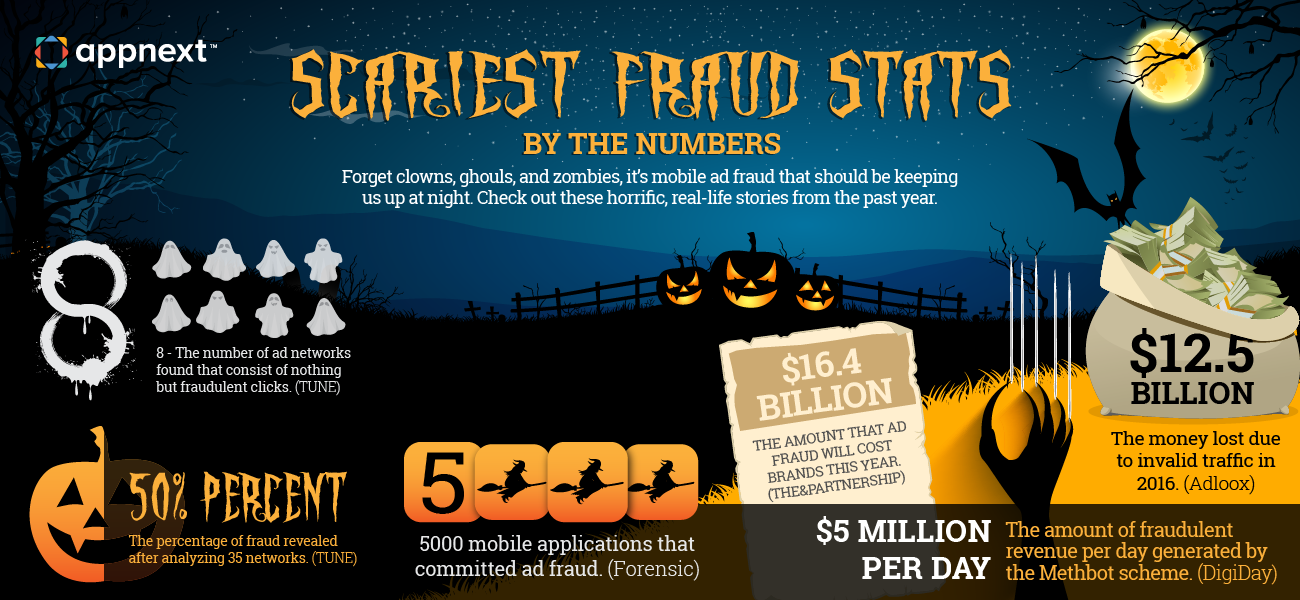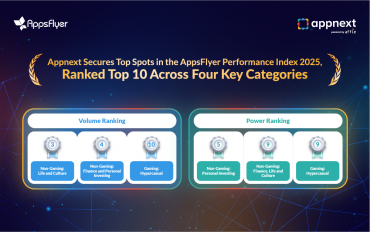The world is a scary place—but the internet can be even scarier. Just take a look at mobile advertising app fraud. These scams have been so effective, they’ve fooled thousands of advertisers. And, the worst part is, they are still out there hiding in the shadows, creating sophisticated robots and other techs to do their dirty work. Over the last year, the number of different types of mobile ad fraud integrated into apps via malware has grown (and continues to grow). This includes click spamming, click injection, ad stacking, and invisible ads.
This is seriously freaky! Take the US market as an example: mobile app install advertising expenditure reached $5.7 billion last year, and it is growing. This Halloween we are bringing you the most frightening fraud stats and stories.
Google Play got PLAYED
Google kicked out 40 apps from its Play store after one the BIGGEST case of ad fraud was revealed. It turns out these devilish apps were secretly forcefully driving Android users to click on ads. An article by Forbes suggests that the apps were downloaded as many as 36 million times. Security researchers claim this to be the biggest (and scariest) case of ad fraud committed through Google Play as well as being successful when it comes to a number of installs from the store.
This shenanigan started with Kiniwini, the South Korean company responsible for hiding an illegitimate ad click function inside 41 apps (mostly games). Once the wretched code was added to the apps, web pages were secretly opened in the background through a software that imitated a PC browser. The malware used a JavaScript code to find and click on banners from the Google Ads infrastructure allowing Kiniwini to make money ($300,000 per month) off of every ad click. If that’s not a great costume, I don’t know what is.
 Minecraft fans got TRICKED, and it wasn’t pretty
Minecraft fans got TRICKED, and it wasn’t pretty
Fan of Minecraft? You might have been tricked! Recently, a handful of mods for Minecraft Pocket Edition were taking over player’s smartphones and tablets and using them to power an ad fraud botnet.The vindictive apps were dispersed through the Google Play store and were advertised as character “skins.” Security researchers from Symantec believe that approximately 600,000 to 2.5 million players installed the questionable, “naughty” apps.
 Related content: Marketer’s Guide to Mobile App Attribution[
Related content: Marketer’s Guide to Mobile App Attribution[
 Got your own scary story? Send it to marketing@appnext.com
Got your own scary story? Send it to marketing@appnext.com




Comments are closed.